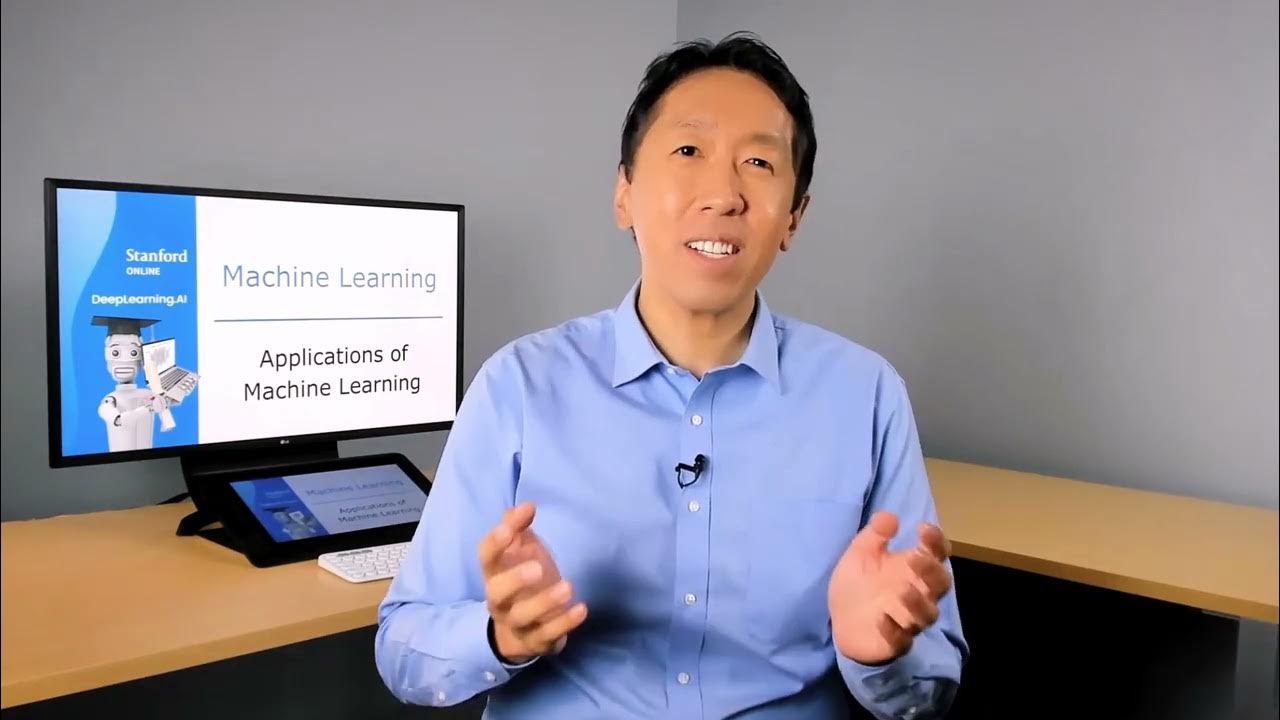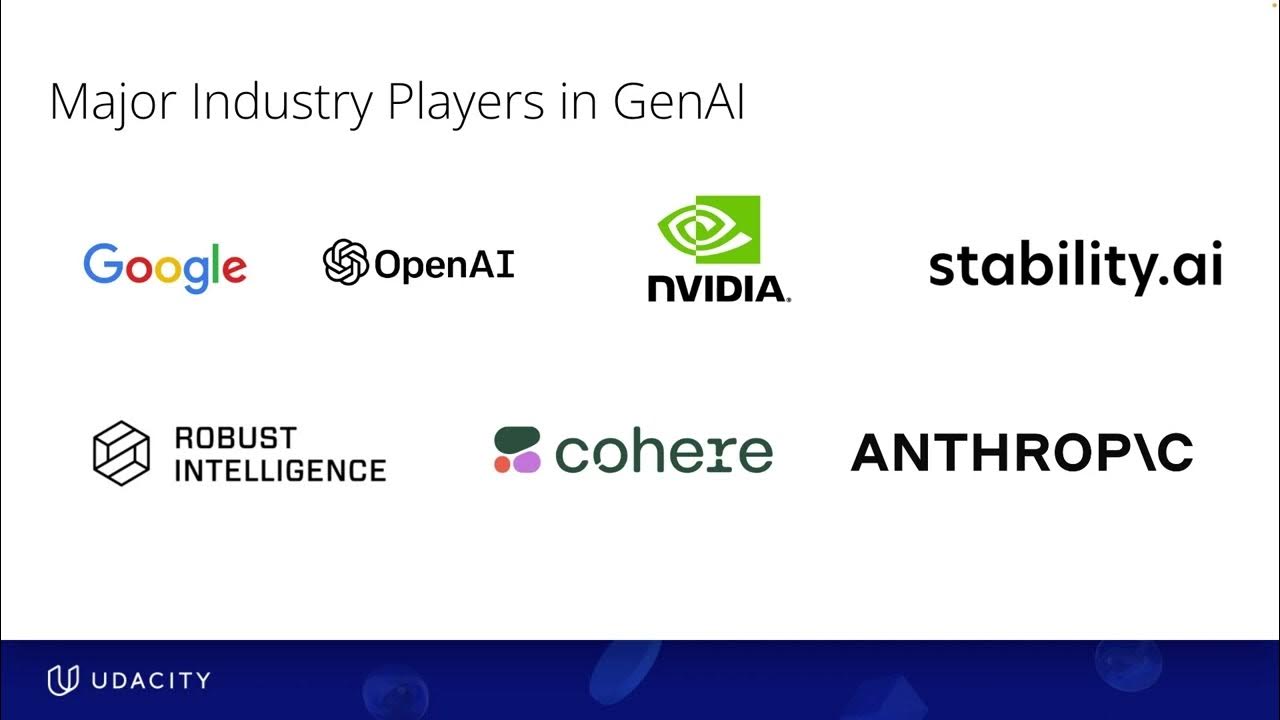Chapter 3 - Video 1 - Kecerdasan Buatan
Summary
TLDRArtificial intelligence (AI) is transforming the world, influencing everything from healthcare to finance, with major tech companies like Google and Amazon leading the charge. AI analyzes vast amounts of data to predict trends and automate everyday tasks. First proposed in 1950 by John McCarthy, AI has rapidly evolved, fueled by data growth and processing advancements. It is categorized into 'weak AI,' designed for specific tasks, and 'strong AI,' which mirrors human-like intelligence. As AI continues to develop, it raises both immense opportunities and ethical concerns about its future impact on society.
Takeaways
- 😀 Artificial intelligence (AI) is becoming increasingly influential in various sectors, from finance to healthcare, with major tech companies like Google, Amazon, Facebook, and Netflix leading the charge.
- 😀 AI systems, such as Alexa and Google Assistant, utilize vast amounts of data to analyze patterns and predict future outcomes, like predicting the demand for yogurt next week.
- 😀 The concept of AI dates back to 1950, when Professor John McCarthy first proposed the idea of machines learning through trial and error, aiming to solve human problems.
- 😀 Over the last 60 years, AI has evolved exponentially, driven by increased data generation and advancements in computational power.
- 😀 Approximately 95% of the data in the world has been created in the last four years, enabling AI systems to process information rapidly and accurately.
- 😀 AI is now deeply embedded in everyday technologies, such as smartphones, cars, social media, gaming, and banking, making it an integral part of daily life.
- 😀 AI systems are designed to perform tasks like humans, using complex algorithms and mathematical functions, but they are also continuously evolving.
- 😀 AI has the potential to greatly enhance daily life by automating tasks like organizing a closet or preparing customized coffee for each family member.
- 😀 There are two main types of AI: weak AI (narrow AI), which is focused on a single task, and strong AI, which would possess consciousness and emotions like human beings.
- 😀 Weak AI examples include voice assistants like Alexa, which are effective at specific tasks but cannot handle tasks outside of their training, like providing real-time traffic updates.
- 😀 Strong AI, an ideal form, is akin to fictional robots like Ultron from Avengers, which could exhibit consciousness, reasoning, and emotions, but this remains a future possibility.
Q & A
What is artificial intelligence (AI) and how is it used in our daily lives?
-Artificial intelligence (AI) refers to machines and systems that are designed to perform tasks that would typically require human intelligence. It is used in various applications, such as in smartphones, social media, banking, healthcare, and smart devices like Siri and Google Assistant. AI processes massive amounts of data to analyze patterns and predict future outcomes, like recommending products or services.
When and who first proposed the idea of artificial intelligence?
-The concept of artificial intelligence was first proposed in 1950 by Professor John McCarthy of Dartmouth University. He formed a group of mathematicians and computer scientists to explore whether machines could learn in a similar way to humans using trial and error.
What was the goal of John McCarthy's project in 1950?
-The goal of McCarthy's project was to understand how machines could use language, abstraction, and concepts to solve problems, improve themselves, and learn in a way similar to humans.
What are some of the factors that have contributed to the rapid development of AI in recent years?
-Several factors have contributed to the rapid advancement of AI, including the massive increase in data generated daily (95% of the world's data was created in the last four years), advancements in processing speeds, and improvements in algorithms. These have allowed computers to quickly analyze and interpret large amounts of information.
What does the term 'general learning robot' refer to?
-A general learning robot refers to a robot that is capable of reacting appropriately to new situations. It can solve problems, adapt to changes, and make decisions based on its environment, similar to how humans learn and reason.
How does problem-solving work in AI systems like robots?
-AI systems like robots can solve problems by using inputs to identify the best solution. For example, a robot might encounter an obstacle like a river, and based on its problem-solving capabilities, it will find a way to cross the river using available resources, demonstrating its ability to adapt and solve challenges.
What are the two main categories of artificial intelligence?
-The two main categories of AI are: 1) Weak AI (or Narrow AI), which is designed to perform a specific task, like AlphaGo playing the game GO. 2) Strong AI (or General AI), which aims to replicate human-like intelligence and consciousness, capable of performing multiple tasks and even understanding emotions.
What is an example of weak AI?
-An example of weak AI is Alexa. While Alexa can perform various tasks well, like playing music or setting reminders, it cannot respond to queries it has not been trained on, such as real-time traffic updates.
What differentiates strong AI from weak AI?
-Strong AI, unlike weak AI, is designed to have a level of consciousness and emotional understanding. It is capable of performing multiple tasks autonomously and making decisions in a more human-like manner. An example of strong AI is the character Ultron from the Avengers, who is depicted as having self-awareness and emotions.
How does AI impact industries such as healthcare and finance?
-AI plays a significant role in sectors like healthcare and finance by automating complex tasks, predicting trends, optimizing processes, and providing personalized services. In healthcare, it can analyze patient data to assist in diagnostics, while in finance, AI systems can manage investments and predict market trends.
Outlines

This section is available to paid users only. Please upgrade to access this part.
Upgrade NowMindmap

This section is available to paid users only. Please upgrade to access this part.
Upgrade NowKeywords

This section is available to paid users only. Please upgrade to access this part.
Upgrade NowHighlights

This section is available to paid users only. Please upgrade to access this part.
Upgrade NowTranscripts

This section is available to paid users only. Please upgrade to access this part.
Upgrade NowBrowse More Related Video

#2 Machine Learning Specialization [Course 1, Week 1, Lesson 1]

AI and Machine Learning | Rise of AI Robots | AI 2022 | ElonMusk BillGates SundarPichai|Simplilearn

Where Did Laid-Off Tech Workers Go?

FIX - Up 100% In 4 Months - Building Data Centers As Fast As They Can!

Lidl скоро изменит МИР ты точно этого не знал / история одного из самых крупных предприятий Германии

U8-04 V2 Wichtige Akteure der Branche V3
5.0 / 5 (0 votes)